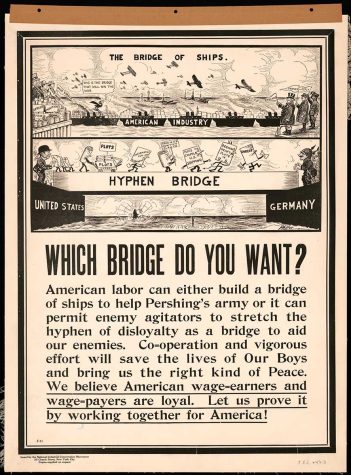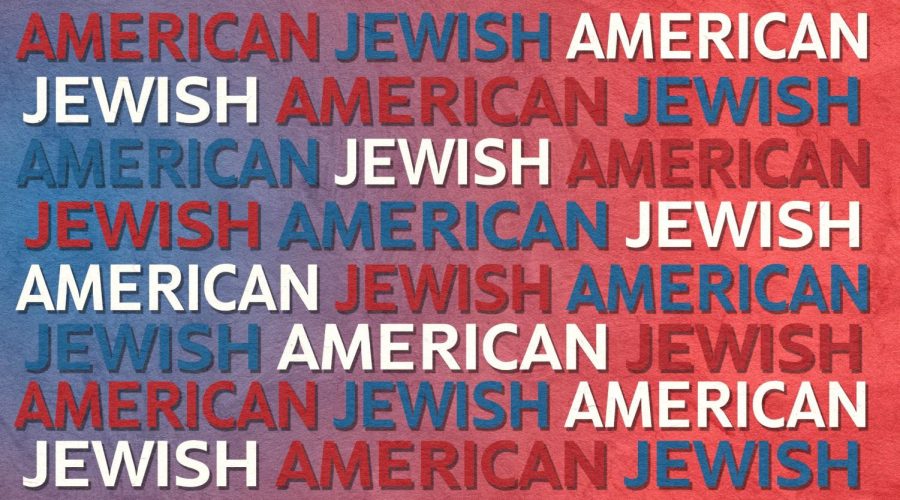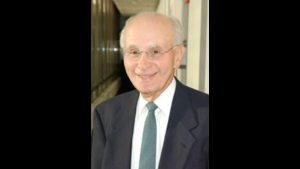Which side are you on: Jewish American or American Jew?
Published March 19, 2023
(JTA) — Earlier this month the New York Times convened what it called a “focus group of Jewish Americans.” I was struck briefly by that phrase — Jewish Americans — in part because the Times, like the Jewish Telegraphic Agency, tends to prefer “American Jews.”
It’s seemingly a distinction without a difference, although I know others might disagree. There is an argument that “American Jew” smacks of disloyalty, describing a Jew who happens to be American. “Jewish American,” according to this thinking, flips the script: an American who happens to be Jewish.
If pressed, I’d say I prefer “American Jew.” The noun “Jew” sounds, to my ear anyway, more direct and more assertive than the tentative adjective “Jewish.” It’s also consistent with the way JTA essentializes “Jew” in its coverage, as in British Jew, French Jew, LGBT Jew or Jew of color.
ADVERTISEMENT
| RELATED: More Jewish Opinion
I wouldn’t have given further thought to the subject if not for a webinar last week given by Arnold Eisen, the chancellor emeritus at the Jewish Theological Seminary. In “Jewish-American, American-Jew: The Complexities and Joys of Living a Hyphenated Identity,” Eisen discussed how a debate over language is really about how Jews navigate between competing identities.
“What does the ‘American’ signify to us?” he asked. “What does the ‘Jewish’ signify and what is the nature of the relationship between the two? Is it a synthesis? Is it a tension, or a contradiction, or is it a blurring of the boundaries such that you can’t tell where one ends and the other begins?”
Questions like these, it turns out, have been asked since Jews and other immigrants first began flooding Ellis Island. Teddy Roosevelt complained in 1915 that “there is no room in this country for hyphenated Americans.” Woodrow Wilson liked to say that “any man who carries a hyphen about with him carries a dagger that he is ready to plunge into the vitals of the Republic.” The two presidents were frankly freaked out about what we now call multiculturalism, convinced that America couldn’t survive a wave of immigrants with dual loyalties.
ADVERTISEMENT
The two presidents lost the argument, and for much of the 20th century “hyphenated American” was shorthand for successful acculturation. While immigration hardliners continue to question the loyalty of minorities who claim more than one identity, and Donald Trump played with the politics of loyalty in remarks about Mexicans, Muslims and Jews, ethnic pride is as American as, well, St. Patrick’s Day. “I am the proud daughter of Indian immigrants,” former South Carolina Gov. Nikki Haley said in announcing her run for the Republican presidential nomination this month.
For Jews, however, the hyphen became what philosophy professor Berel Lang called “a weighty symbol of the divided life of Diaspora Jewry.” Jewishness isn’t a distant country with quaint customs, but a religion and a portable identity that lives uneasily alongside your nationality. In a 2005 essay, Lang argued that on either side of the hyphen were “vying traditions or allegiances,” with the Jew constantly confronted with a choice between the American side, or assimilation, and the Jewish side, or remaining distinct.
Eisen calls this the “question of Jewish difference.” Eisen grew up in an observant Jewish family in Philadelphia, and understood from an early age that his family was different from their Vietnamese-, Italian-, Ukrainian- and African-American neighbors. On the other hand, they were all the same — that is, American — because they were all hyphenated. “Being parallel to all these other differences, gave me my place in the city and in the country,” he said.
In college he studied the Jewish heavy hitters who were less sanguine about the integration of American and Jewish identities. Eisen calls Rabbi Mordecai Kaplan, the renegade theologian at JTS, “the thinker who really made this question uppermost for American Jews.” Kaplan wrote in 1934 that Jewishness could only survive as a “subordinate civilization” in the United States, and that the “Jew in America will be first and foremost an American, and only secondarily a Jew.”
Kaplan’s prescription was a maximum effort on the part of Jews to “save the otherness of Jewish life” – not just through synagogue, but through a Jewish “civilization” expressed in social relationships, leisure activities and a traditional moral and ethical code.
Of course, Kaplan also understood that there was another way to protect Jewish distinctiveness: move to Israel.

The political scientist Charles Liebman, in “The Ambivalent American Jew” (1973), argued that Jews in the United States were torn between surviving as a distinct ethnic group and integrating into the larger society.
According to Eisen, Liebman believed that “Jews who make ‘Jewish’ the adjective and ‘American’ the noun tend to fall on the integration side of the hyphen. And Jews who make ‘Jew’ the noun and ‘American’ the adjective tend to fall on the survival side of the hyphen.”
Eisen, a professor of Jewish thought at JTS, noted that the challenge of the hyphen was felt by rabbis on opposite ends of the theological spectrum. He cited Eugene Borowitz, the influential Reform rabbi, who suggested in 1973 that Jews in the United States “are actually more Jewish on the inside than they pretend to be on the outside. In other words, we’re so worried about what Liebman called integration into America that we hide our distinctiveness.” Rabbi Joseph Soloveitchik, the leading Modern Orthodox thinker of his generation, despaired that the United States presented its Jews with an unresolvable conflict between the person of faith and the person of secular culture.
When I read the texts Eisen shared, I see 20th-century Jewish men who doubted Jews could be fully at home in America and at home with themselves as Jews (let alone as Jews who weren’t straight or white — which would demand a few more hyphens). They couldn’t imagine a rich Jewishness that didn’t exist as a counterculture, the way Cynthia Ozick wondered what it would be like to “think as a Jew” in a non-Jewish language like English.
They couldn’t picture the hyphen as a plus sign, which pulled the words “Jewish” and “American” together.
Recent trends support the skeptics. Look at Judaism’s Conservative movement, whose rabbis are trained at JTS, and which has long tried to reconcile Jewish literacy and observance with the American mainstream. It’s shrinking, losing market share and followers both to Reform — where the American side of the hyphen is ascendant — and to Orthodoxy, where Jewish otherness is booming in places like Brooklyn and Lakewood, New Jersey. And the Jewish “nones” — those opting out of religion, synagogue and active engagement in Jewish institutions and affairs — are among the fastest-growing segments of American Jewish life.
Eisen appears more optimistic about a hyphenated Jewish identity, although he insists that it takes work to cultivate the Jewish side. “I don’t think there’s anything at stake necessarily on which side of the hyphen you put the Jewish on,” he said. “But if you don’t go out of your way to put added weight on the Jewish in the natural course of events, as Kaplan said correctly 100 years ago, the American will win.”
The views and opinions expressed in this article are those of the author and do not necessarily reflect the views of JTA or its parent company, 70 Faces Media.















